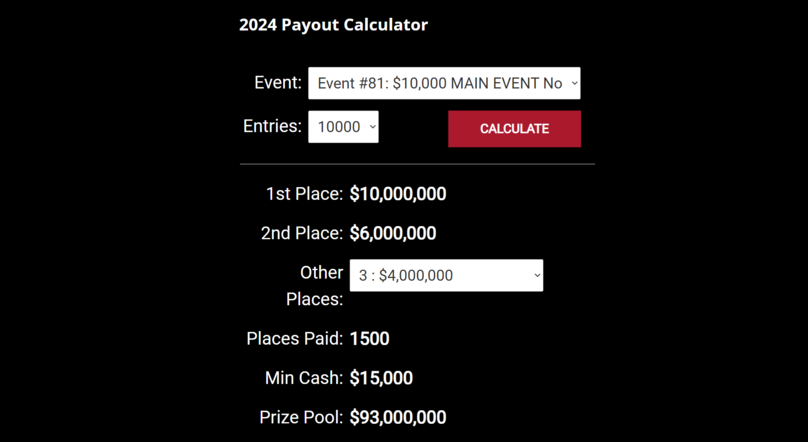The payout structure is one of the main themes of the World Series of Poker every year, but this year the powers that be decided on something that will appeal to most people. This week, the WSOP announced on its Twitter feed the spectator-appealing decision to increase the size of the mincash and to flatten its payout structure overall.
NEW PAYOUTS for 2024 WSOP!
- WSOP - World Series of Poker (@WSOP) May 21, 2024
Min cash for most events will now be 2x buy-in.
See payout calculator for full breakdown of prizes for each event. https://t.co/bEG5KwCKlF pic.twitter.com/O73LSYAfQU
Some players like to claim that they're just playing to win, but the vast majority of poker players want more even payout structures, they want more mincash, bigger mincash, and bigger prizes before the final table - to achieve this, they're willing to pay out less to the top rungs at the final table. This is evidenced by the fact that most final tables end in some sort of deal (it's not reflected in the official results, but it's true).
It could be to reduce variance, save time, guarantee a certain amount or just to reduce pressure. Increasingly, there are also stories of deals that happen outside the official records. Small jumps in payjump money are not insignificant either; for example, the payjump between $2,004 and $2,134 is relatively small, but some people are obsessed with their hourly wage in this regard. If you add ten minutes of procrastination to, say, one orbit of payjump, a difference of $130 could mean an hourly wage of $780.

To flatten the payout structures even further, one way to do this is to pay most players more money that is taken off the top rungs. The other way to flatten them is to pay out more people. The argument against flatter payouts is that there is more stalling, but several agree that players will stall whether there is a x1.5, x2, or x3 payout on a straight bubble. One could also argue that moving the bubble forward and paying out more is good for the pros as well, because the bubble is where they reach EV and the sooner that happens the better for them.
One of the few tournaments without a mincash worth x2 buy-in this year will be the Main Event, which has a specific payout structure. The reason for this is, as in years past, an effort to market the astronomical first place prize as much as possible. There is even a payout calculator available on the WSOP website where you can try out for yourself what the payout structure for each event will look like for any number of entries.

Overall, though, these moves by the WSOP series have been met with an overwhelmingly positive feeback from the community. When the prizes get into the six- or seven-figure range, everyone is happy and we don't have to force a compelling first prize for the sake of marketing and sales. More players will be happier if we reward them for deep runs, not just final tables. Do you agree?
Source - WSOP, pokerstrategy, pokernews, Twitter (X)
